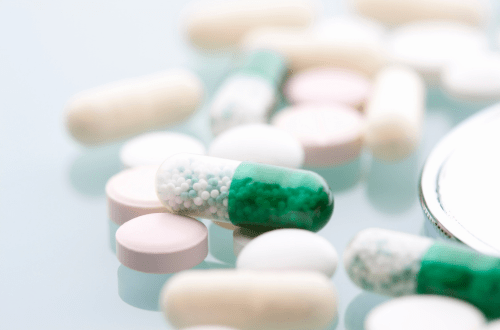How Effective Safety Monitoring with the Right CRO Partner Can Lead to Cost Savings in Clinical Trials
Clinical trials serve as a foundational component of evidence-based medicine and are essential for driving advancements in medical science by providing a basis for developing and validating new therapeutic interventions. However, a notable detractor is that the total cost of conducting these trials can easily reach millions or even billions of dollars, of which a significant portion is usually allocated to pharmacovigilance and safety monitoring. Government agencies like the Food and Drug Administration (FDA) utilize results from randomized clinical trials to regulate the safe use of medicinal products in the United States. Pharmacovigilance is defined as “the detection, monitoring, understanding, and prevention of adverse events (AEs) for a medicine,” and requires vigilant oversight by sponsors and their contract research organization (CRO) partner. When these processes are not properly conducted, late-stage clinical trial failures can be a possible outcome, resulting in a sizable financial loss for the sponsor. Therefore, to avoid this issue and ensure the safety of participants while preventing overextending a trial’s allotted budget, sponsors must first choose the right CRO partner. Continue reading as we discuss the importance of safety monitoring in clinical trials and the costs associated with it, the role of a well-suited CRO pharmacovigilance partner, as well as how these factors can contribute to substantial cost savings.
The Critical Role of Safety Monitoring in Clinical Trials and Key Stakeholders
Safety monitoring in clinical trials is a vital process that is aimed at identifying, evaluating, minimizing, and appropriately managing any potential risks. Most clinical trials will often include safety outcomes within their primary or secondary endpoints, underscoring the importance of safety monitoring in a study. For this reason, in Europe, Risk Management Plans (RMPs) are obligatory as part of the drug approval process by the European Medicines Agency (EMA). An RMP comprises a summary of significant identified risks of the drug, potential risks, and missing information. This is similar to the Data and Safety Monitoring Plan (DSMP) required in the US by the FDA and serves as the basis for an action plan for pharmacovigilance and risk minimization activities.
There are several key stakeholders involved in the safety monitoring process, each with a different role to play:
- Sponsor: In addition to developing the clinical trial protocol, the sponsor also sets up and maintains clinical databases for the data collected in the trial and is mandated to report key safety information to all stakeholders in a timely fashion.
- Subject: Subjects, either patients or healthy volunteers, participate in a clinical trial and sign the Informed Consent Form (ICF), which provides important safety information so the subjects can make an informed decision on whether to participate in the trial.
- Investigator: These experienced medical professionals are responsible for notifying their institutional review boards (IRBs) and the sponsor of any issues that pose a threat to the safety and well-being of the trial subjects.
- IRB/Ethics Committee: These committees are responsible for protecting the rights and welfare of human subjects.
- Data Safety Monitoring Board (DSMB): This expert committee reviews the accumulating data from the clinical trial to ensure ongoing safety.
- Regulatory Bodies: Authorities, such as the FDA in the US and the EMA in Europe, review applications and enforce safety standards.
The Costs Associated with Safety Monitoring in Clinical Trials
One of the most substantial cost drivers in clinical trials is safety monitoring. For example, they rely on guidance from a DSMB, a specialized committee responsible for the independent review and oversight of the trial’s safety data. Setting up these committees are one way in which budgets for safety monitoring can be used. Sponsors are also typically required to develop a detailed safety monitoring plan along with the study protocol to clearly outline their processes for detecting, reporting, and managing adverse events. Investing in the help of a CRO with an experienced pharmacovigilance team may require higher upfront costs than sourcing this oversight solely in-house, but may also provide future cost savings by leveraging the CRO’s regulatory expertise. Maintaining strict compliance with regulatory requirements is non-negotiable in a clinical trial and must entail thorough documentation of all practices, as well as timely reporting of events to regulatory bodies. However, creating a well-trained team that can conduct these processes efficiently also contributes to the cost of safety monitoring.
Why Choosing the Right CRO in Safety Monitoring Makes a Difference
Many CROs will come equipped with full-service pharmacovigilance services as part of their CRO operations. When sponsors choose a partner with these capabilities, they can take advantage of several offerings that not only help reduce direct costs associated with safety monitoring, but these CROs also leverage their expertise to anticipate future potential safety issues and reduce costly errors later on. Using the previous DSMB example, CROs can be contracted by a sponsor to help appoint a board composed of members with the required background and expertise, as well as arrange other details such as the board meeting schedule or formatting post-meeting reports. CROs can also be responsible for developing a robust DSMP that outlines the procedures for detecting, reporting, and managing adverse events. Another convenient benefit of partnering with the right CRO is their role in ensuring timely reporting to the DSMB and regulatory bodies, ensuring all serious safety events are addressed efficiently.
Cost Savings Through Effective Safety Monitoring with the Right CRO
Although taking necessary protective measures to safeguard the well-being of trial participants may be inherently costly, achieving substantial cost savings associated with safety monitoring is possible with effective implementation. Perhaps the most significant way in which partnering with the right CRO can potentially lead to financial savings is by helping prevent costly regulatory penalties and trial shutdowns, both of which can substantially cut into the trial budget. Effective safety monitoring outsourced to an experienced pharmacovigilance CRO team can also reduce the occurrence of trial delays. Nearly 72% of all clinical trials will experience delays lasting longer than one month. These delays have massive financial repercussions, estimated to cost anywhere between $600,000 and $8 million every day a product’s development and launch is put off.
Moreover, establishing efficient pharmacovigilance measures with the help of a safety monitoring CRO can save costs associated with patient compensation for any harm or injury incurred during the trial. Compensation claims can be a significant drain on a trial’s allotted budget, but having a robust monitoring process can help avoid these, ensuring that any potential harm is identified and addressed promptly, minimizing their occurrence. Lastly, effective safety monitoring conducted by the right CRO ultimately helps maintain a clinical trial sponsor’s strong reputation by further increasing investor confidence and improving the chances of securing funding for future studies.
Conclusion
In conclusion, CROs play a crucial role in the clinical trials industry, ensuring safety monitoring is carried out with strict compliance with regulatory requirements and efficiently so as to promote cost savings. By choosing the right CRO, pharmaceutical sponsors can take advantage of their expertise to provide additional oversight of patient safety, while eliminating the need to devote finite financial resources to training an in-house pharmacovigilance team. Ultimately, partnering with an experienced data safety CRO increases cost savings long-term by reducing the risk of late-stage clinical trial failures, trial initiation delays, and regulatory penalties and minimizing the occurrence of injury compensation claims by anticipating potential safety concerns. All these combined underscore how a well-chosen safety CRO can support sponsors throughout the clinical trial process and provide a significant return on investment. The most critical responsibility of researchers is to protect the well-being of patients while maintaining the highest data quality. Therefore, pharmacovigilance CROs are an essential component of achieving this successfully while maximizing cost savings for sponsors.
About TFS HealthScience Drug Safety & Pharmacovigilance CRO
TFS HealthScience CRO is a leader in Drug Safety & Pharmacovigilance, consistently supporting pharmaceutical sponsors with experts adept at setting up, managing, and optimizing product safety needs throughout the entire clinical development pipeline. Our commitment to flexibility and tailored services set us apart in the industry and our teams understand that safety monitoring is fundamental to protecting trial participants and ensuring strict regulatory compliance. When sponsors choose to partner with TFS Drug Safety & Pharmacovigilance CRO, they benefit from efficient, high-quality systems for collecting, managing, and analyzing all safety data in a fully integrated platform that enables convenient oversight. TFS offers end-to-end local and global safety monitoring services that span all phases of clinical development.
Whether it’s a pharmacovigilance system set up in support of marketing approval, ongoing management of post-marketing patient safety, or a full suite of clinical safety services as part of full-service studies, TFS has got you covered. Visit our website to learn more about the comprehensive safety solutions TFS can offer for your next clinical trial, or connect with a TFS representative today!
Connect with Us
Contact us today to discover how TFS can be your strategic CRO partner in clinical development.



